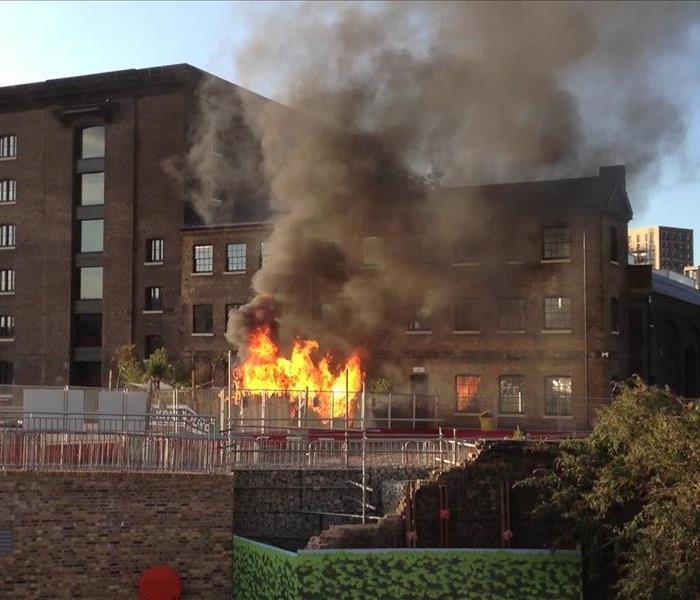What to do After a Fire in your Home or Commercial Building
8/24/2016 (Permalink)
 SERVPRO of North Palm Beach County specializes in fire and water damage restoration. We have the specific damage restoration training, personnel, and
SERVPRO of North Palm Beach County specializes in fire and water damage restoration. We have the specific damage restoration training, personnel, and
The days following a fire are extremely scary for a homeowner or a property manager of a commercial building. From structural damage to cleaning up and removing smoke odor, tackling a “to do” list following a fire can be daunting and overwhelming. It is important to remember that one should not enter their home or commercial property after a fire until the fire department has confirmed that it is safe to do so. According to the American Red Cross, the following actions should be taken:
- Check for structural damage
- Check utilities like telephones, electrical systems, and climate control systems
- Look around for household items that may contain toxic fumes and any other hazards (things like cleaning products may present a hazard when mixed with fumes)
- Contact a local service like SERVPRO of North Palm Beach County to clean up and remove the smoke odor
Consulting a professional is imperative to keeping the property safe and secure. When in doubt, call SERVPRO to make sure that they can clean the damage and remove the odor throughout the property.
Fire Repair and Restoration
Recovering your home and commercial building after a fire means taking the necessary steps to revive the structure. After the fire trucks leave, your home likely suffers from fire and smoke damage and extensive water damage from firefighting efforts. SERVPRO of North Palm Beach County have the specialized fire restoration training needed to restore your home to pre-fire condition.
Have Questions About Fire, Smoke, or Soot Damage? Call Today – (561) 881-8784
Every fire damage event is a little different, and requires a unique solution, but the general process stays the same. The steps listed below illustrate our process for the “typical” fire damage emergency.
Step 1: Emergency Contact
The restoration process begins when you call us. Our representative will ask questions regarding the fire damage event that will help us respond immediately with the appropriate equipment and resources.
Step 2: Inspection and Fire Damage Assessment
We carefully inspect and test adjoining rooms of your property to determine the extent of the fire, smoke, and soot damage. This step is crucial to developing a plan of action.
Step 3: Immediate Board-Up and Roof-Tarp Service
Fire damage can often compromise windows, walls, and roofs. To maintain security and to protect against further damage, we can board up missing windows and walls and place tarps on damaged roofs.
Step 4: Water Removal and Drying (if water damage is present)
The water removal process begins almost immediately and removes the majority of the water. We then use dehumidifiers and air movers to remove the remaining water and complete the drying process.
Step 5: Removal of Smoke and Soot from All Surfaces
We use specialized equipment and techniques to remove smoke and soot from ceilings, walls, and other surfaces.
Step 6: Cleaning and Sanitizing
We clean, sanitize, and disinfect all of the restorable items and structures that were damaged by the fire. We use a variety of cleaning techniques to restore your belongings to pre-fire condition. We’re also trained to remove odors using industrial air scrubbers and fogging equipment.
Step 7: Restoration
Restoration is the final step—getting your home or business to its pre-fire condition. Restoration may involve minor repairs, such as replacing drywall, painting, and installing new carpet; or it may entail major repairs such as the reconstruction of various areas or rooms in a home or business.
Remember, these steps should be carried out by trained professionals. Attempting to do these things on your own can result in unsafe conditions for you, your family, and your employees.

 24/7 Emergency Service
24/7 Emergency Service